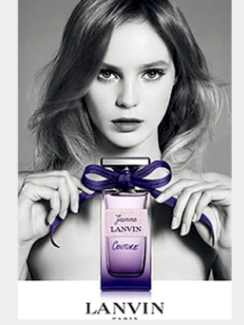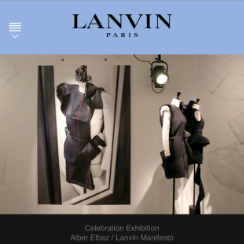The Invention of Style
We love our individual style whether we call it hippie, chic, rocker, conservative, edgy, sporty, casual, or preppy. Like it or not you have one, and your style is your own personal preference. Style is a choice and should be within our comforts unless of course it's completely adorable and worth a little pain. The history of style has put us on a path to grow on our own. My favorite part of this story the pioneers in early fashion history are still present on the runways. Not to mention, are available for sale in many retailers today. Lanvin, Pucci, Dior, Kors, and Calvin Klein are a few names that helped build our foundation and made fashion what it is today. There is nothing more beautiful and amazing than seeing each individual styles that we create. We not only share a love for fashion but also for the ability to be different. It all began with fashion houses that were founded by individual designers. As a side note, it's why I call my blog "House of Style Stories" because it builds on a foundation of a particular style.
image
Fashion houses started in the 19th century when a man named Charles Frederick Worth, the first designer to have a custom tag sewn into garments he designed. I would love to know Mr Worth and can only image what it would be like to design with him. What would your custom clothing label look like? We can only imagine what this era was like.
Charles Frederick Worth (1825 - 1905) was an Englishman and is considered to be the first designer that was backed by a large business and employed tailors and seamstresses. A former draper (dealer in cloth), Worth specialized in being able to dictate to his customers what they should wear.
His gowns were exquisite, ornately decorated, and constructed in the finest materials.
Worth's gowns are well known for their 'Crinolines' (long tutu-like fabric) and cage-like metal structures that held the dress out in a committed shape.
Around the start of the 20th century, fashion magazines began to publish photographs and were extremely influential on future designs. In cities throughout the world, fashion magazines were a hot item and coveted by fashion enthusiasts everywhere. These magazines were appealing to those in the fashion industry and had a profound effect on various communities. Even though these magazines were very popular, the feeling is that not all could afford what was published and was extended to a very small group of insiders. Talented illustrators sketched attractive fashion plates for publications, which covered recent developments in fashion and beauty. Funny, I tell a lot of my clients to subsribe to a magazine like InStyle to get a current visual on trends and latest fashions.
The irony of this story is that I began my research before the Paris attacks and I was even more inspired after learning of the terrible news.
I felt compelled to pay my respects to Paris, the fashion capital of the world. Paris has brought us so much in the way of fashion. Oh la la, city of love and home of some many great designers.
Two prominent French designers of the 1920's were Jeanne Lanvin and Jean Patou. Jeanne Lanvin, began her career in fashion as a milliner (hat designer).
She made gorgeous clothing for her young daughter and was asked to design dresses for their mothers and children. Lanvin's name appears in the fashion yearbook from 1901 onwards and the 1920's she reached the peak of her popularity and success. The Lanvin style embraced the look of the time with use of complex trimmings, dazzling embroideries, and beaded decorations in floral colors that would became a Lanvin trademark. By 1920 Lanvin produced various designs such as sportswear, furs, lingerie, menswear, and interior fashions.
The Lanvin house still designs today and is respected globally. By the way, the house is pronounced Lahn-vahn.
Due to difficult times, hemlines were shortened in both evening and day wear. In times where designers needed to save on costs, they would substitute materials whenever possible. From 1940 onward, no more than thirteen feet of cloth was permitted to be used for a coat and a little over three feet for a blouse.
No belt could be over one and a half inches wide. In modern day, we still look for substitutions and ways to modify materials. For example, the cashmere production is imported overseas to save on costs which is ultimately passed on to the consumer. I am not sure about you but I am sold although considered controversial to many.
Until the 1960s, Paris was considered to be the center of fashion throughout the world. However, between 1960 and 1969 a radical shake-up occurred in the fundamental structure of fashion.
From the 1960s onward, there would never be one single trend or fashion but a great assortment of possibilities. Undoubtedly linked to all the influences in other areas of people's lives. This is what we would call individuality and a unique style. Events such as industry, a distinct teenage culture, the counterculture movement, all have major effects on fashion.
Although historically there are pioneers or founders of fashion, we invent style all of the time. If we are taking our children to school, grocery shopping, going to work, or out for a nice dinner our style can vary. The one constant that remains regardless of which event you attend, is that it is your style. Have fun transforming yourself as you grow, your style will change as you do. Own it, make it yours, and do not waver from what fits you best. Style makes us all who we are today so let's show up and dress our best for the part.


















